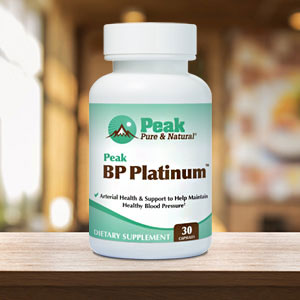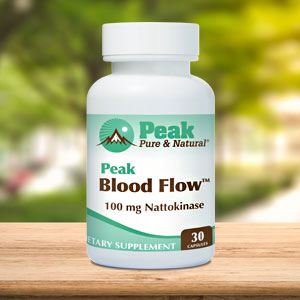Get Easy Health Digest™ in your inbox and don’t miss a thing when you subscribe today. Plus, get the free bonus report, Mother Nature’s Tips, Tricks and Remedies for Cholesterol, Blood Pressure & Blood Sugar as my way of saying welcome to the community!
The daily trick for overcoming pain

Chronic pain is no joke. It’s something that can consume you, making you unable to concentrate on work or family, and can ultimately make you unable to participate in even the simplest activities of daily life.
Living with chronic pain, or the constant threat of pain, can affect memory and cognitive ability, and increase the risk of dementia.
Natural medicine offers a wide array of options for controlling or even eliminating chronic pain, including acupuncture and meditation.
Now, research has uncovered yet another option, one that’s probably the last thing you’d think of doing…
Exercise more and tolerate pain better
Full disclosure: I’m not a big fan of exercise. And when I’m in pain, it’s the last thing I want to do.
But science is showing us that exercise is, in fact, another great tool in our arsenal of natural pain relief methods.
Researchers at the University Hospital of North Norway used data from a large population study of 10,732 adults to analyze subjects’ self-reported physical activity, as well as their pain tolerance. Subjects were surveyed twice, about eight years apart.
Pain tolerance was measured by submerging people’s hands in ice water and having them rank their pain on a scale.
Those with more active lifestyles were found to be more tolerant of pain. Not only that, but the more people said they exercised throughout the study, the more their ability to withstand pain grew.
After the second survey, those who had increased their levels of physical activity during the preceding eight years reported greater pain tolerance over time.
Do medications work on chronic pain?
Yes, but they come with a price. Celebrex, a drug known as a COX-2 inhibitor, which works by blocking enzymes that cause inflammation. Older adults are at higher risk of side effects that include stomach bleeding, ulcers, dizziness and high blood pressure.
If chronic pain becomes severe enough, many people turn to opioids for help. Unfortunately, research shows that over time your body adapts to these medications and they bring less and less pain relief.
Shockingly, even just a few days of use can increase the risk of addiction. Researchers have found that the chances of being on opioids a year after starting increases after only five days of being on the medication.
How to use exercise to tame pain
No one is suggesting you go out and run a marathon tomorrow. In fact, before starting a new exercise program, it’s best to consult with your doctor, particularly if your chronic pain stems from a medical condition.
Here are some things to keep in mind when you want to use exercise as a way to deal with chronic pain.
Break up your exercise. Don’t worry about those guidelines that say you should be exercising 30 minutes a day. If you’re in pain, the rules are different for you. Research shows that short bursts of activity, or exercise “snacking,” can help control pain.
Think out of the box. “You don’t have to limit yourself to traditional exercise like walking on a treadmill for a certain number of miles or minutes,” says Kirsten Ambrose of the University of North Carolina’s Arthritis Research Center. “You can count gardening or walking the dog.”
“The goal is to increase the amount of time spent moving versus sitting.”
Follow the two-hour rule. Listen to your body.If pain is worse two hours after finishing exercise than it was before you started, this is an indication that you have overdone it and should scale back the next time.
Editor’s note: Are you feeling unusually tired? You may think this is normal aging, but the problem could be your master hormone. When it’s not working, your risk of age-related diseases skyrockets. To reset what many call “the trigger for all disease” and live better, longer, click here to discover The Insulin Factor: How to Repair Your Body’s Master Controller and Conquer Chronic Disease!
Sources:
Exercise May Help You Better Tolerate Pain — Time
Chronic pain: Medication decisions — Mayo Clinic
How to Exercise With Chronic Pain — NY Times















